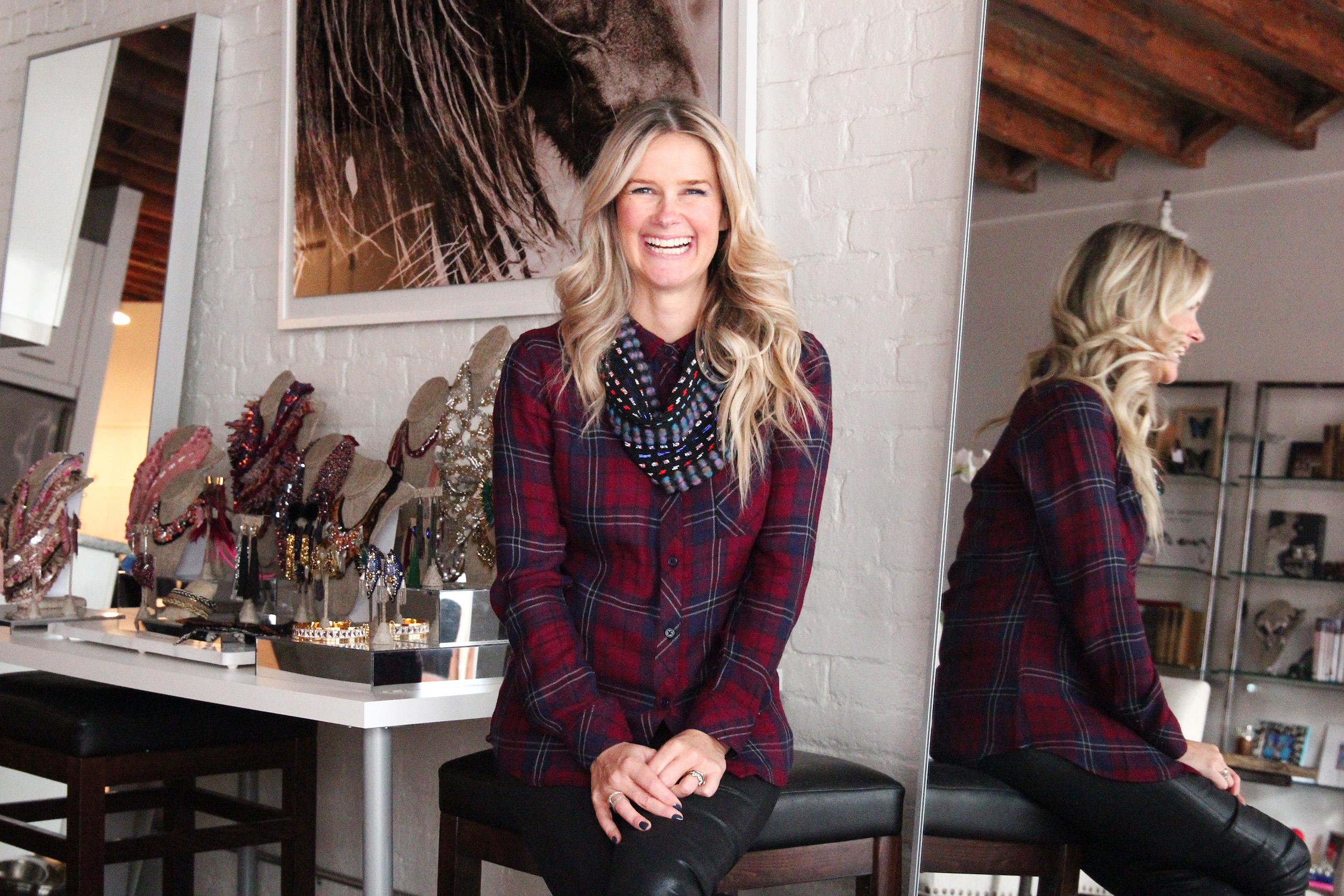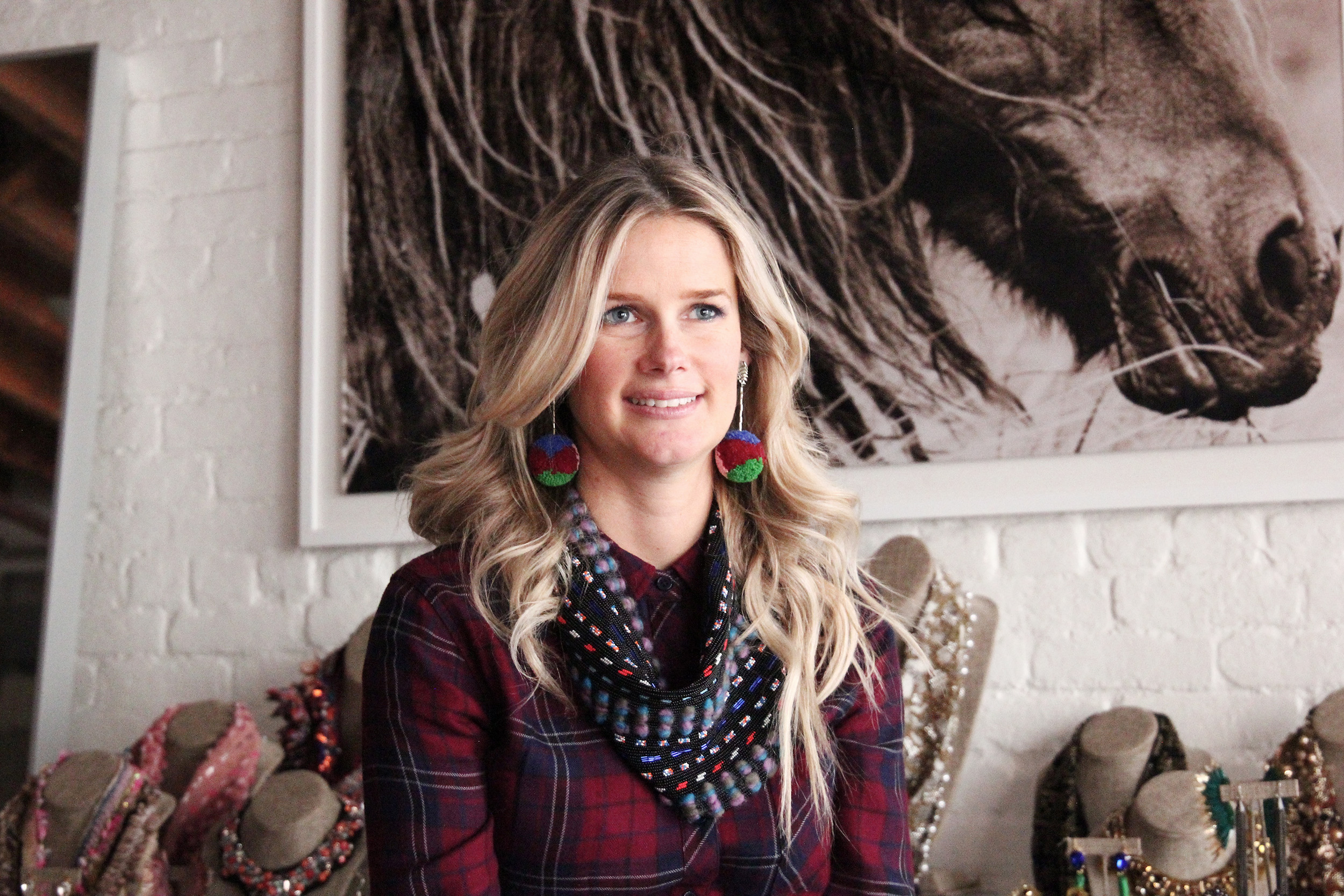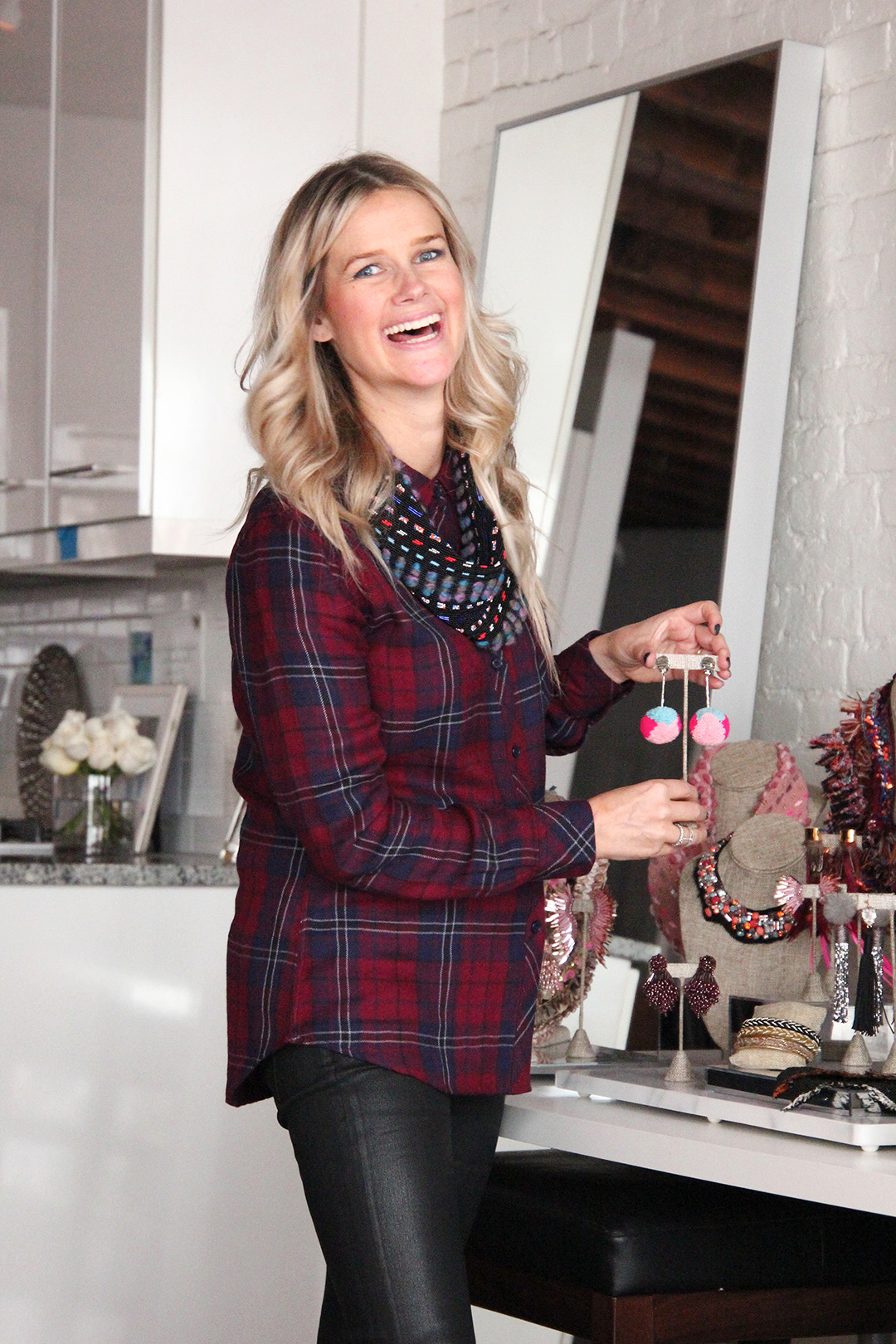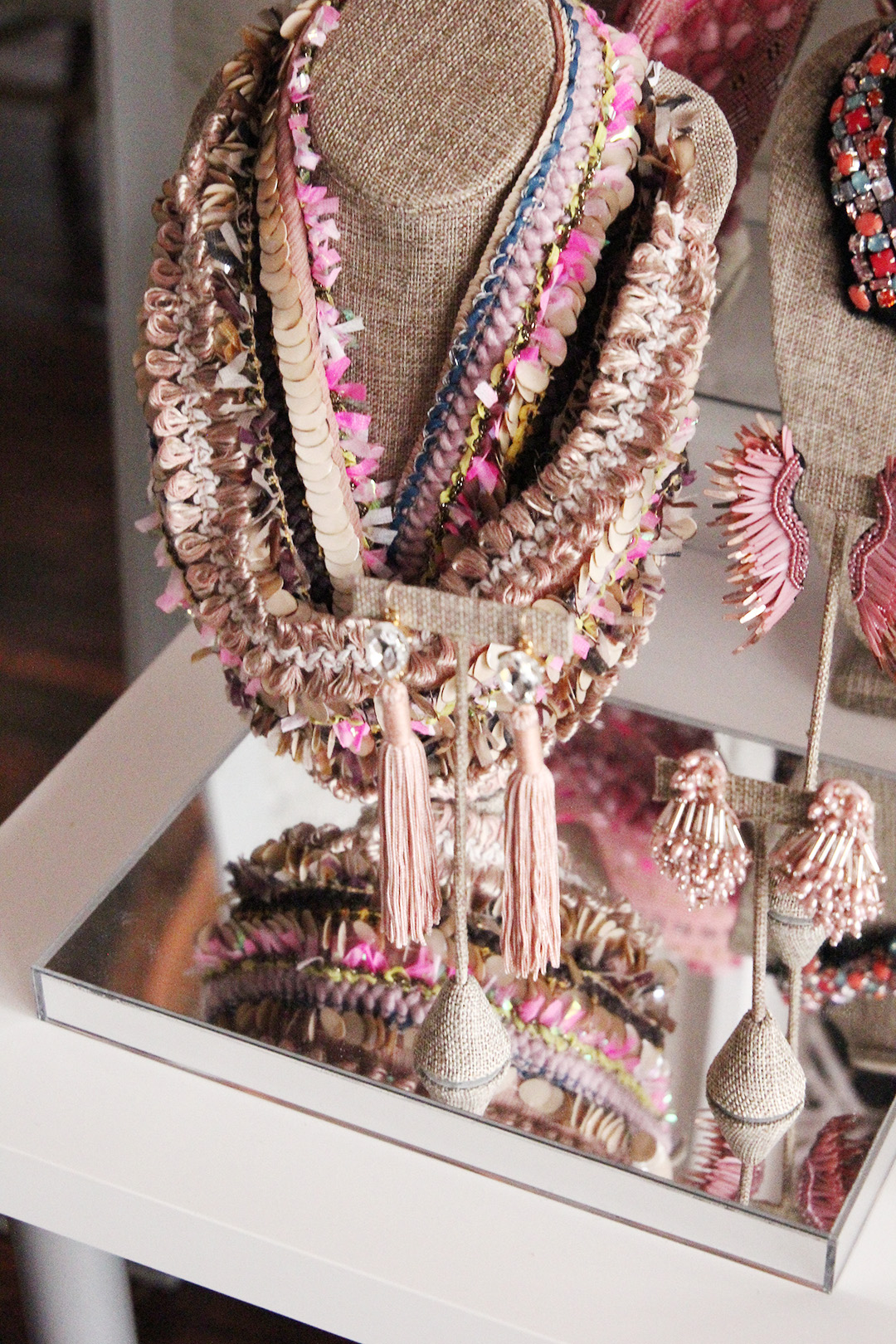We’ve all read those stories in magazines about the power of a statement piece of jewellery. You know, the kind that instantly makes a simple t-shirt and jeans combination look more pulled together and well, less basic. Their charm is widely known but thanks to the whole minimalist revival that’s been dominating the past few years, those kinds of treasures are pretty hard to come by. Mignonne Gavigan understands that the struggle is real and resolved to take away the hunt when she launched her eponymous jewellery label back in 2013.
Her collections aren’t full of your normal costume-style jewellery, though. The line is centred around her signature piece: a scarf remodelled into a necklace covered with beadwork, fringing and embellishment. The Parson grad spent ten years working at brands like Loeffler Randall and Rachel Roy before going out on her own and while her name might not ring a bell, we’re almost certain you’ve seen her designs all over your IG feed, being that they’re favourites among fashion directors and stars like Katy Perry.
In a nutshell, she knows what she’s doing, but don’t take our word for it. Find out what she learned about the creative process and how to scale through working for other brands, how she got her label of the ground and why her definition of success isn’t determined by sales.
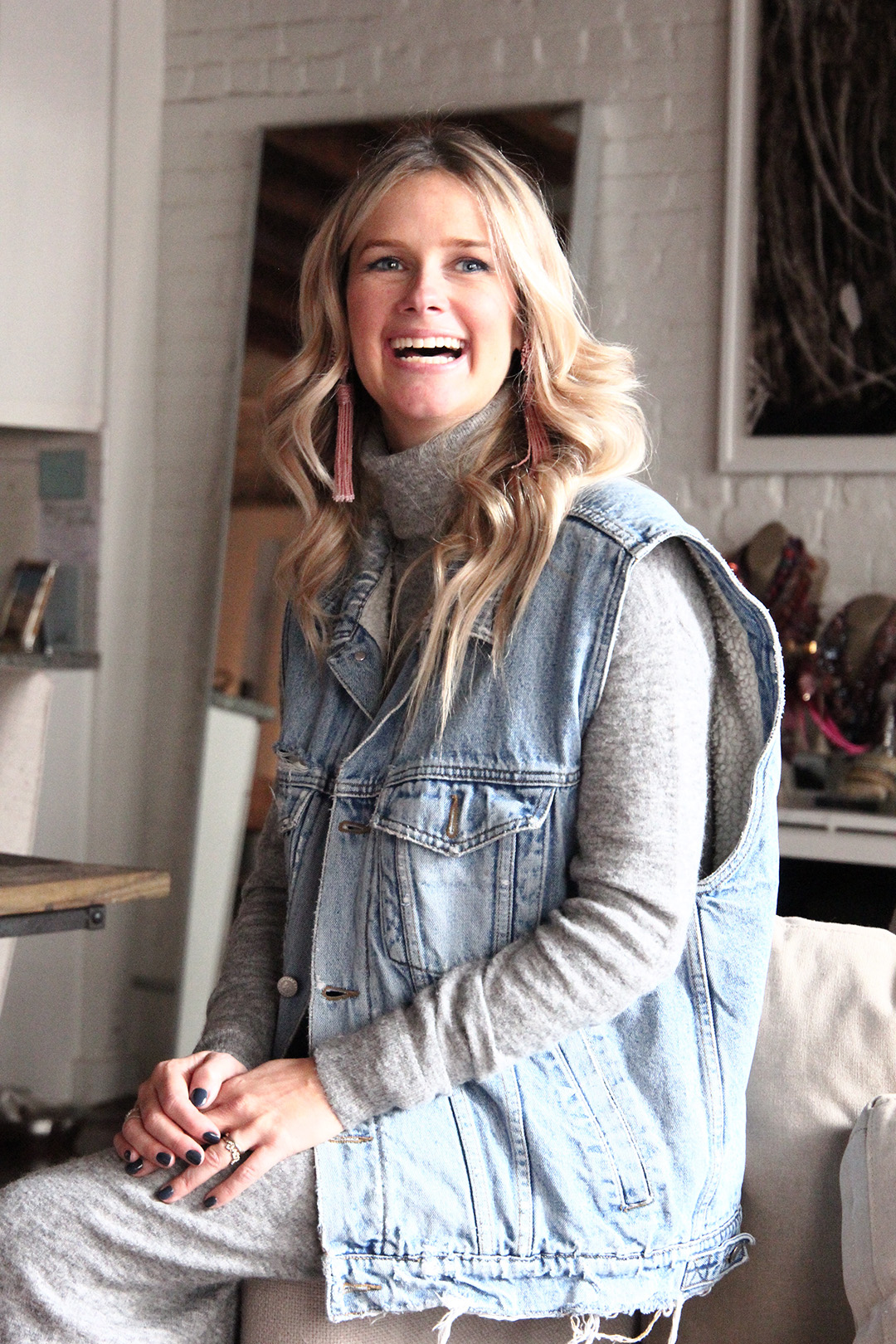 ON HER JOURNEY INTO DESIGN & HOW MARC JACOBS INSPIRED HER: I have always been interested in making things, drawing and painting…I used to create villages out of construction paper or weave monkey grass together to make larger objects. As I got older, I started draping fabric around me to create dresses or cutting up vintage jeans to get a look that I couldn’t find at the local stores. I was accepted to the North Carolina School of the Arts summer program and by high school, I was lucky enough to have my work bought for my high school’s permanent gallery. Going on to intern in the design and sampling room at Marc Jacobs was incredibly influential for me. I learnt that there can be just as much beauty inside a gown as there is on the outside. I wasn’t paid anything but I did it because I loved the art and the craftsmanship — I know what it takes to make something that crazy beautiful. Everything I make is on beaded crinkle chiffon; the idea is to bring a piece of couture to every day.
ON HER JOURNEY INTO DESIGN & HOW MARC JACOBS INSPIRED HER: I have always been interested in making things, drawing and painting…I used to create villages out of construction paper or weave monkey grass together to make larger objects. As I got older, I started draping fabric around me to create dresses or cutting up vintage jeans to get a look that I couldn’t find at the local stores. I was accepted to the North Carolina School of the Arts summer program and by high school, I was lucky enough to have my work bought for my high school’s permanent gallery. Going on to intern in the design and sampling room at Marc Jacobs was incredibly influential for me. I learnt that there can be just as much beauty inside a gown as there is on the outside. I wasn’t paid anything but I did it because I loved the art and the craftsmanship — I know what it takes to make something that crazy beautiful. Everything I make is on beaded crinkle chiffon; the idea is to bring a piece of couture to every day.
THE EUREKA MOMENT FOR HER LABEL: At my first assistant design position after Parsons School of Design, I worked with a very small apparel design company. Each member wore a lot of hats so I was able to get a lot of experience very quickly. I was draping a runway gown one day and I had ripped up an old vintage dress to place parts of the beading on the gown for inspiration. There was a piece on the floor that I picked up, draped around my neck and walked home through Soho. Three different people stopped me in the street to ask where they could buy one. In design school, they tell you that if you want to have a successful fashion company, you need to start with an individual idea and from that day forward, the scarf necklace was born. It’s the foundation of everything I do.
ON LEARNING THE ROPES AT RACHEL ROY AND LOEFFER RANDALL BEFORE STARTING HER LINE: I knew I needed much more experience to run my own company successfully so I kept working to learn more about design – what styles and colours sell, how to make a well-rounded collection, what to base each season’s themes and ideas on and how to grow them. I loved working at Rachel Roy and Loeffler Randall because I love shoes; not just wearing them, but how much creativity can be in just one pair. In apparel, you have to create the top, the jacket, and the pants to create a look, but with a shoe, there is so much personality in just the one pair. At Rachel Roy, I was the head footwear designer for her contemporary and more accessibly priced line. I travelled the world for inspiration, which is one of my passions, and I was able to learn not just how to churn out a collection but also about how the shoe fits and how they’re constructed. At Loeffler Randall, I was able to learn more about the workings of a small business. I was the head of [founder] Jessie’s footwear design team and loved every minute of it. There was a wonderful working environment there and seeing the many facets of a small brand was enlightening. What I learnt from both companies too is how important it is to create both sellable and editorial items to elevate your brand.
WHY SHE NEVER QUESTIONED HAVING A BUSINESS PARTNER: I worked for a very long time under different designers so that when it came time for me to do it on my own, I was able to trust myself but there is so much that goes into a business that you can’t even begin to understand until you actually do it. I am a very visual and creative person and I knew I needed someone analytical and numbers-oriented to be my other half. I met my partner Layne Logigian through mutual friends, an incredibly bright and kind person who was just what I was looking for. She had been working in finance in New York and was looking for a change. She is one of the hardest workers I know and I believe there is mutual respect for each other’s strengths.
ON HER FIRST BIG HIRE AND HOW SHE FUNDED IT: We started out with one of my best friends, Kinsey Fennebresque who had 12+ years of fashion retail experience. She started working with Tory Burch in the early days, helping build the brand. Kinsey had known me through all my design positions and she had always said that once I started my own line, she wanted to sell it for me. Finding a talented sales person is a very hard thing. I had no idea what went into that kind of role, and as Kinsey and I hit the pavement taking our MG line to over 30 trunk shows across the US, I began to understand what that role meant. It was instrumental to take our MG product – which was a very new concept at the time – and get it in front of people, show them how to wear it and what to wear it with. Once they had bought one, people were coming back for more! I couldn’t have done that without giving away parts of the company for big hires like that.
ON SCALING THE BUSINESS: Layne and I hired a consultant team, AfoundersLab, who have helped focus on everything from growth analytics to our marketing strategy – things Layne and I don’t have an extra second to do or focus on. We’ve hired another Sales Director who has specific jewelry experience in growing collections and building those relationships. We’ve hired support employees to fill in where we can’t. Our team is very focused and goal oriented.
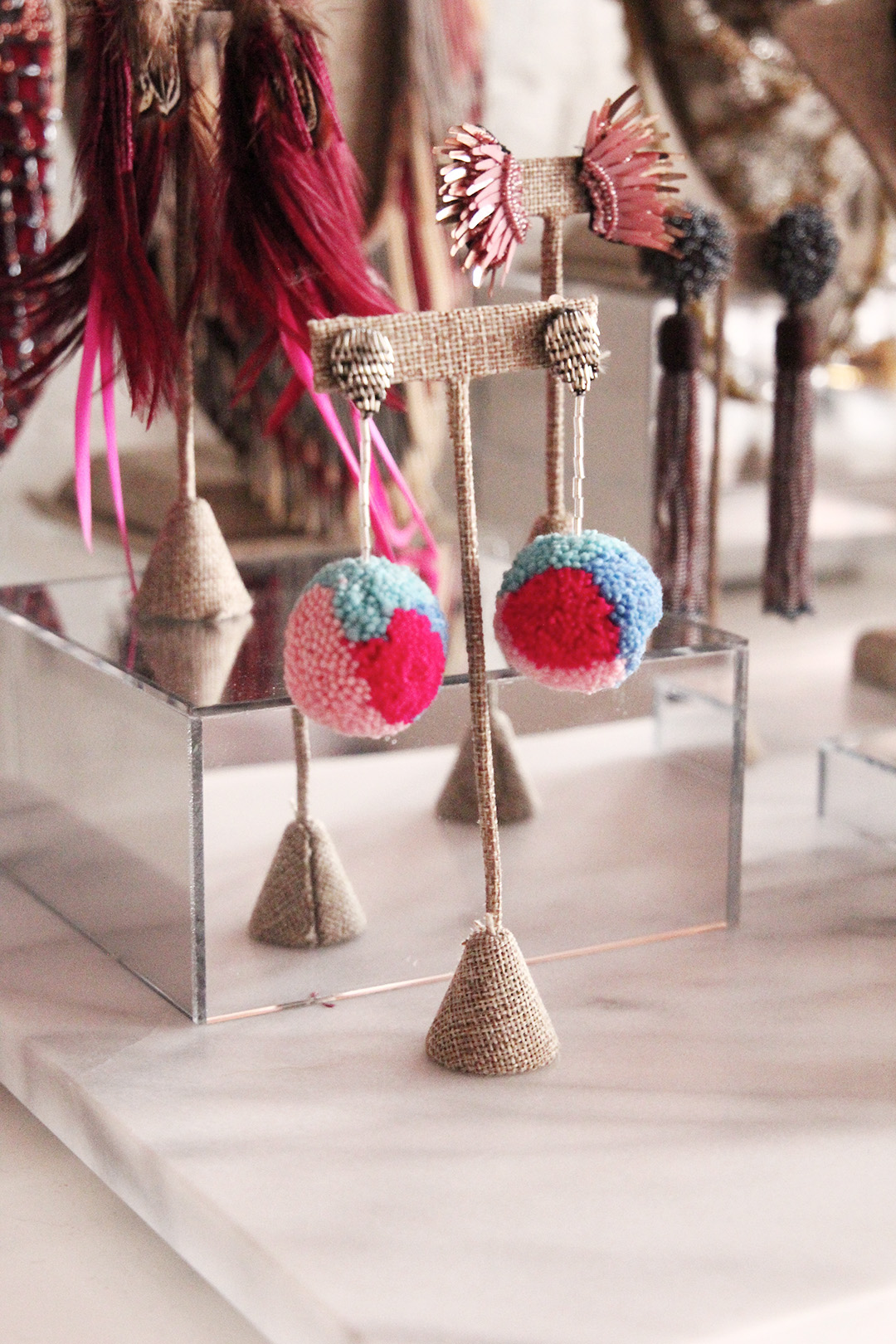 WHAT YOU SHOULD KNOW BEFORE LAUNCHING YOUR FIRST COLLECTION: Lay out all costs – not just sampling costs. Make costing lists of vendor’s time, patterns, material sourcing. Each season’s costs are different depending on what you’re producing so I would have a very clear idea of what costs are involved before you make the launch. Do research and make some initial samples to see if you will need one round of samples or several to get the prototypes perfect. I met our primary factory when I was freelancing 10 years ago and they remain close friends and loyal business partners. Your vendors are the most important relationships you have. Make sure to treat them the way you’d like to be treated.
WHAT YOU SHOULD KNOW BEFORE LAUNCHING YOUR FIRST COLLECTION: Lay out all costs – not just sampling costs. Make costing lists of vendor’s time, patterns, material sourcing. Each season’s costs are different depending on what you’re producing so I would have a very clear idea of what costs are involved before you make the launch. Do research and make some initial samples to see if you will need one round of samples or several to get the prototypes perfect. I met our primary factory when I was freelancing 10 years ago and they remain close friends and loyal business partners. Your vendors are the most important relationships you have. Make sure to treat them the way you’d like to be treated.
THE CREATIVE PROCESS: I begin by doing research on what is happening on the runways in terms of colours and themes and combine it with interesting design details, artwork, knick knacks that are currently inspiring me. I travel a lot and I love going to local markets for inspiration. We source materials primarily in France, Italy and India. Living in New York provides daily inspiration, from what’s happening street style wise, to the latest textiles coming out of the city. The energy of New York is contagious. You feed off it. Everyone is operating at the top of their game, being the most productive, reaching the most people.
ON WHY SUCCESS ISN’T ABOUT SELLING MILLIONS OF NECKLACES: For me, a successful brand is all about looking at the bigger picture and constantly expanding as a designer. This can only come from analyzing what happened the season before and doing a better job the next. It’s funny because in today’s world, seeing your piece on a celebrity means you’ve made it, whereas I’ve always felt like you make it when you’re considered a legitimate designer by your colleagues and peers. People pay for celebrity placement. I think I am still working to “make it”. We are in our third year of business and as we continue to grow and make better choices each season and I feel like we’re getting closer to achieving the success our brand has the potential for.
HER BIGGEST LESSONS: It’s important to love what you do because you will work harder and more often than you ever have before. Hire a trustworthy team because you don’t want to run into legal issues later. Keep an open mind, there are always better, more interesting ways things can be done. Trial and error is important but get your feet wet before jumping in head first.

